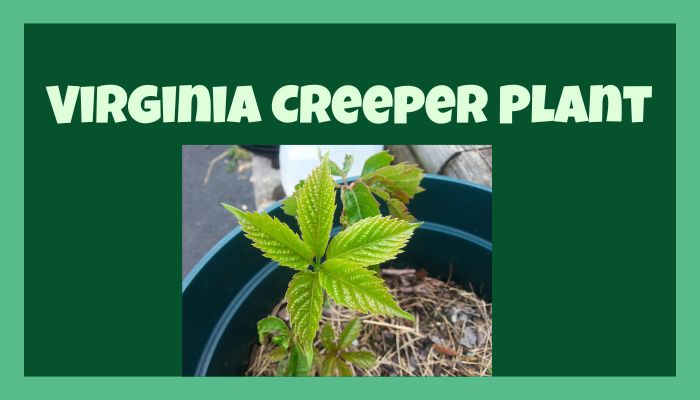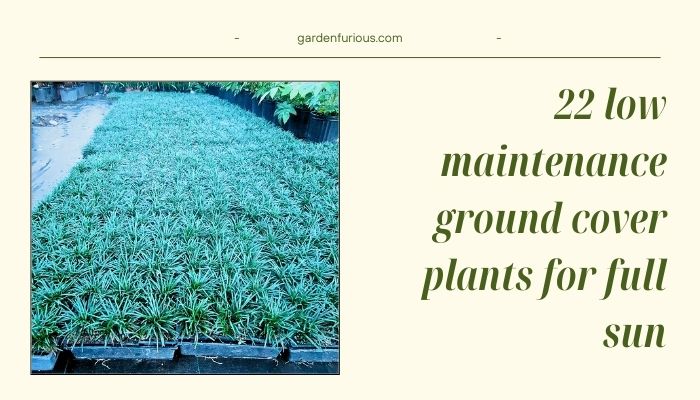Virginia Creeper (Parthenocissus quinquefolia) is a versatile climbing vine that brings beauty and functionality to any landscape. Whether you’re looking for a fast-growing vine to cover a wall or create a vibrant ground cover, this hardy plant offers a lot. Known for its adaptability and stunning fall colors, Virginia creeper is a popular choice for homeowners and landscapers alike. Let’s explore everything you need to know about growing, maintaining, and making the most of Virginia Creeper in your garden.
What Makes Virginia Creeper Stand Out?
Virginia Creeper is prized for its fast-growing nature and ability to quickly cover large areas, making it ideal for adding privacy or enhancing the appearance of fences and trellises. Its five-lobed leaves provide a unique aesthetic throughout the year, with the most dramatic transformation occurring in the fall. As temperatures cool, the leaves change to brilliant shades of red and orange, offering a stunning display that can compete with the fall foliage of any tree.
Growing Conditions and Care Tips
Virginia Creeper is a highly adaptable plant that thrives in various conditions, which is one of the reasons for its popularity. However, understanding its preferred growing environment can help you maximize its potential:
- Soil: Virginia Creeper can tolerate a wide range of soils but thrives in well-drained, slightly acidic to neutral soils with a pH between 5.5 and 7.0. Adding compost can improve fertility and drainage, ensuring the plant grows vigorously
- Light: This vine can grow in full sun to partial shade. While it can survive in both, full sun encourages more vibrant fall colors, while partial shade results in slightly more subdued tones
- Watering: Regular watering is essential during its first growing season to establish a strong root system. Once established, the plant becomes relatively drought-tolerant, requiring less frequent deep watering. Be cautious of overwatering, as it can lead to root rot.
- Pruning: Pruning is a critical part of maintaining Virginia Creeper. It is best done in early spring before the new growth begins. Regular pruning helps control the plant’s vigorous growth and prevents it from becoming invasive
Common Uses for Virginia Creeper in Landscaping
Virginia Creeper is widely loved for its versatility in landscaping. Here are some ways you can use this plant:
- Climbing Vine: Its ability to cling to surfaces like walls, trellises, and fences makes it an excellent choice for vertical gardening. It adds texture and color to otherwise plain surfaces, and its ability to climb without a trellis simplifies its maintenance.
- Ground Cover: Virginia Creeper can be used to cover large areas of the ground, providing a low-maintenance and natural-looking alternative to grass or other ground covers. It’s a perfect choice for slopes or areas where erosion control is necessary.
- Wildlife Attraction: The small blue-black berries that Virginia Creeper produces in the fall are a food source for birds, making it a great addition to a wildlife-friendly garden However, it’s important to note that the berries are toxic to humans.
Is Virginia Creeper Right for You?
Despite its many benefits, Virginia Creeper does have some potential downsides that should be considered before planting. First, it’s known for being invasive in certain regions, so it’s essential to monitor its growth closely and keep it in check. Regular pruning and thinning will help you manage its tendency to spread.
Also, its berries, while attractive to birds, are toxic to humans and pets, so it may not be the best choice for homes with small children or curious animals.
FAQs About Virginia Creeper
1. Can Virginia Creeper damage walls or structures?
Yes, Virginia Creeper uses adhesive pads to cling to surfaces, which can potentially damage certain materials like stucco or painted surfaces. It’s recommended to grow it on masonry or structures that can withstand its climbing nature
2. How fast does Virginia Creeper grow?
Virginia Creeper is a fast-growing vine and can cover large areas within a season, growing up to 20 feet per year under ideal conditions
3. Does Virginia Creeper attract pests or diseases?
While Virginia Creeper is relatively pest-resistant, it can sometimes attract leafhoppers and scale insects. Proper care, like avoiding overhead watering, can help prevent fungal diseases such as powdery mildew
4. How do you propagate Virginia Creeper?
You can propagate Virginia Creeper from cuttings taken in the spring or early summer. Make sure to use a rooting hormone to encourage quicker root development
5. Can Virginia Creeper be grown indoors?
Virginia Creeper is typically grown outdoors due to its size and vigorous nature. However, if you have the space and a sunny area indoors, it can be grown in a large pot with proper training and pruning
Final Thoughts: A Bold, Beautiful Choice for Your Garden
Virginia Creeper offers incredible versatility, from creating vibrant backdrops in your garden to serving as a robust ground cover. Its low maintenance needs and ability to grow in various conditions make it a go-to plant for both beginners and seasoned gardeners alike. If you’re looking for a low-cost, high-impact way to enhance your garden’s aesthetic while attracting wildlife, Virginia Creeper could be the perfect choice.



